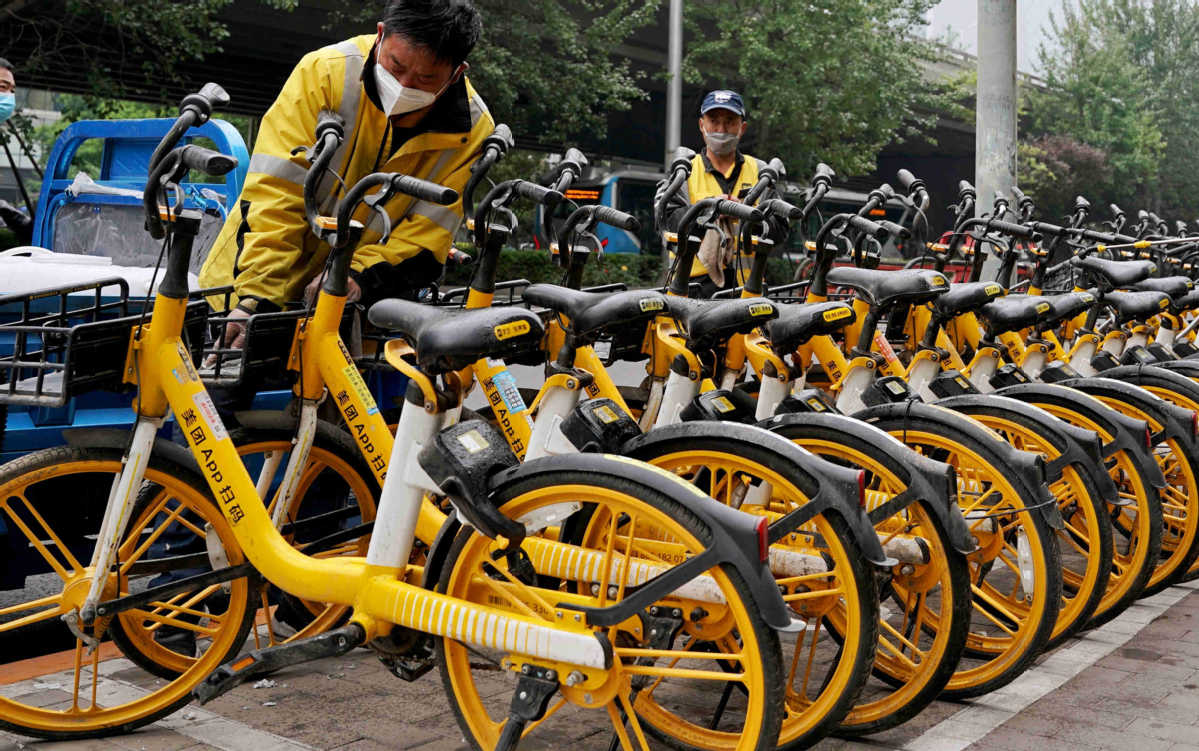Experiencing China’s Smart Bike Sharing Communities
Here at jusha.travel, we love sharing tips to make your China journey unforgettable! One of the most fascinating aspects of modern Chinese urban life, and a game-changer for travelers, is the phenomenon of Smart Bike Sharing Communities. Forget clunky old public bikes; China’s embrace of technology has revolutionized urban cycling, making it incredibly accessible and convenient. This post will delve into how these networks operate, offering practical advice for travelers, and shedding light on the broader technological landscape that makes it all possible. From understanding China bike-sharing groups to navigating with QR code travel, prepare to unlock a new way to explore China. We’ll also provide some crucial Mobike community tips and insights into utilizing local travel apps to enhance your adventure, all while exploring the vibrant world of urban cycling China.
The Revolution on Two Wheels: How It All Began
The concept of public bike sharing isn’t new, but China took it to an unprecedented level. The story truly begins with systems like Hangzhou Public Bicycle, which launched in 2008. This pioneering effort was a direct response to growing congestion and environmental concerns in Chinese cities. It started with a modest 2,800 bicycles and quickly expanded to tens of thousands, aiming to solve the “last mile” problem – bridging the gap between public transport hubs and final destinations. You can learn more about its origins on its Wikipedia page: [Hangzhou Public Bicycle – Wikipedia](https://en.wikipedia.org/wiki/Hangzhou_Public_Bicycle).
However, the real seismic shift occurred around 2016 with the advent of private, dockless services like Ofo and Mobike. These companies innovated by introducing GPS-enabled bikes that users could locate and unlock simply by scanning a QR code with their smartphones. This innovation fueled a nationwide, and eventually global, expansion. At their peak, millions of these dockless bikes were a common sight in Chinese cities, attracting billions in investment. While early growth was explosive, intense competition and financial challenges led to the consolidation of the market, with major players like Ofo facing difficulties, and others like Mobike becoming part of larger entities like Meituan. Other significant players in the current market include Hellobike and Didi Bike. For a more in-depth look at this evolution, check out this comprehensive guide: [Bike Sharing In China: A Comprehensive Guide For Travelers](https://travelchinawith.me/china-travel-blog/bike-sharing-in-china-a-comprehensive-guide-for-travelers/).
Navigating the Two Main Models: Docked vs. Dockless
When you’re trying urban cycling China, you’ll encounter two primary models of bike sharing:
* Dockless Bike Sharing: This is perhaps the most iconic image of China’s bike-sharing boom. Users find available bikes via local travel apps on their smartphones and unlock them by scanning a QR code. The beauty of this system is its flexibility: bikes can be left almost anywhere within designated city limits, making it incredibly convenient for spontaneous short trips. Typically, the cost is quite low, around CNY 0.5–1 per 30 minutes, and some apps even allow you to reserve a bike for up to 15 minutes. This model is synonymous with modern China bike-sharing groups. More details on pricing and reservations can be found here: [Chinese Lifestyle: Bike Sharing, Apps, Mobike, Ofo](https://www.travelchinaguide.com/lifestyle/).
* Docked Public Bicycles: These systems require bikes to be picked up and returned to fixed stations, often found near public transport hubs. While less flexible than dockless bikes, they often offer free usage for the first one or two hours, though they typically require a rental card and don’t offer reservation features.
Understanding these distinctions is essential for travelers. For most tourists, the ease of dockless systems accessed through local travel apps like the one associated with Mobike (now Meituan Bike) will be the go-to choice. These apps are your key to mastering QR code travel for bike rentals.
Smart Cities on Wheels: Integration and Benefits
China’s bike-sharing ecosystem is not just about bikes; it’s deeply embedded in the nation’s broader smart city initiatives. Cities leverage these bike networks with digital infrastructure, embedded sensors, and big data to inform urban planning in real-time. The sharing apps themselves use advanced technologies like artificial intelligence for fleet management, credit scoring, and seamless integration with metro and bus systems, creating a truly multimodal transport experience. This integration is a cornerstone feature of these Smart Bike Sharing Communities. For more on how data is used in smart cities, refer to this detailed report: [China’s Smart Cities Development](https://www.uscc.gov/sites/default/files/China_Smart_Cities_Development.pdf). The use of AI and data in these systems is also discussed here: [Review of Shared Bicycles as a Smart Mobility Solution for …](https://juniperpublishers.com/gjtlh/GJTLH.MS.ID.555592.php).
The benefits extend far beyond convenience:
* Environmental Impact: The widespread adoption of shared electric bikes (e-bikes) and traditional bicycles significantly reduces carbon emissions and eases urban congestion.
* Accessibility: Both locals and tourists benefit immensely from the pervasive availability and low cost of bike sharing. It provides a sustainable solution for “last-mile” connectivity, making urban exploration easier and more enjoyable. This is especially beneficial for those exploring China’s hidden gems!
* Urban Data: The sheer volume of movement data collected by these systems provides invaluable insights for city planners, helping them optimize infrastructure and manage public spaces more effectively.
Mobike Community Tips and Practical Advice for Travelers
Ready to jump on a bike and experience urban cycling China for yourself? Here are some essential Mobike community tips and general advice for travelers:
* Download the Right Apps: The primary dockless bike-sharing services are now often integrated into larger super-apps. For Mobike specifically, it’s now part of the Meituan app. Other key players include Hellobike and Didi Bike, which also have their own apps. You’ll need to download these local travel apps to access the bikes. Ensure you have a working internet connection on your phone (a local SIM card or eSIM is highly recommended).
* Payment Setup: To use these services, you’ll need to link a payment method. For most international travelers, this means setting up WeChat Pay or Alipay first, as these are the dominant payment platforms in China. You can often link your international credit card to these e-wallets.
* Understanding QR Code Travel: This is your key. Once your app and payment are set up, simply open the app, locate a nearby bike on the map, walk to it, and use the app to scan the QR code on the bike. The lock will automatically disengage.
* Parking Etiquette: While dockless bikes offer flexibility, proper parking is crucial. Always park in designated bike areas or in places that don’t obstruct pedestrian traffic. Avoid leaving bikes in gated communities unless specifically allowed. Improper parking can sometimes lead to minor fines from the operating company, so be mindful of the China bike-sharing groups’ rules.
* Safety First: Always be aware of your surroundings. Chinese traffic can be fast-paced, so stay vigilant, use bike lanes where available, and consider wearing a helmet if you have one.
* Differentiating Bike Types: Some services offer electric bikes (e-bikes) in addition to traditional pedal bikes. E-bikes cost a bit more but are excellent for tackling hills or covering longer distances with less effort. They are a game-changer for those wanting to explore further!
The Future of Two-Wheeled Exploration in China
The landscape of Smart Bike Sharing Communities in China continues to evolve. The next phase will likely see even greater integration with other smart mobility solutions, further adoption of e-bikes, and refinements driven by AI and big data. Improved partnerships between bike-sharing companies and city governments will be vital to overcome ongoing challenges like parking management and ensure the systems contribute positively to urban life.
China’s smart bike sharing exemplifies how technological innovation can reshape cities, promote sustainability, and enhance daily life for millions. For travelers like you, it offers an authentic, affordable, and incredibly convenient way to experience the pulse of Chinese cities firsthand. It’s truly a global standard for urban transportation innovation. For more on the future outlook of bike sharing, this article offers additional insights: [Review of Shared Bicycles as a Smart Mobility Solution for …](https://juniperpublishers.com/gjtlh/GJTLH.MS.ID.555592.php).
Wrapping up this adventure, from understanding China bike-sharing groups and mastering QR code travel to leveraging local travel apps and applying key Mobike community tips, you’re now equipped to freely explore China on two wheels.
What are your thoughts on bike sharing? Have you experienced it in China or elsewhere? Share your stories and tips in the comments below! For more fascinating insights and practical advice for your next journey, be sure to visit jusha.travel. We’re constantly updating our site with new articles to inspire and guide your explorations of China.





